

Gambar Pertama ialah : The roar of the Ottoman:
Perkembangan dan Capaian Empayar Islam naungan Khalifah Ottoman tahun 1089 - 1915M) –( bacaan lanjut : klik sini)
Gambar kedua ialah : Gambar Bendera lama negeri Kelantan Darul Naim tahun 1912-1923
Artikel Pilihan 1.
Tajuk : Empayar Chermin: Kelantan atau Patani?
Disunting dari artikel oleh Hj Wan Mohd. Shaghir Abdullah
Posted by: faizn in Kelantan-Patani's Forgotten History
Sumber : http://faizn.blog.friendster.com/2007/12/negeri-chermin-kelantan-atau-patani/
Beberapa orang penulis Kelantan menyebut bahawa negeri Chermin itu ialah negeri Kelantan. Jauh sebelum kemunculan penulis-penulis Kelantan menyebut bahawa negeri Chermin ialah Kelantan, Syeikh Ahmad al-Fathani telah menggelar kerajaan Fathani Darus Salam dengan ‘Fathani Cermin Mekah’.
Oleh itu, ada kemungkinan negeri Chermin itu ialah Patani atau pun memang betul negeri Chermin itu adalah Kelantan. Antara Patani dan Kelantan pada zaman dahulu seolah-olah dua negeri yang tidak boleh dipisahkan baik dari segi kekeluargaan, kebudayaan, geografi dan lain-lain mahu pun pemerintahan.
Maulana Malik Ibrahim yang dianggap sebagai Wali Songo (Wali Sembilan) yang tertua digelar Maulana Maghribi atau Syeikh Maghribi, juga digelar dengan Sunan Gersik. Ada riwayat yang menyebut bahawa beliau berasal dari Farsi. Riwayat lain menyebut bahawa beliau berasal dari keturunan Arab di Kasyan. Sementara pendapat lain mengatakan berasal dari Gujerat, India.
Raffles dalam History of Yava, menyebut, Malik Ibrahim seorang Arab, sepupu Raja Chermin, berasal dari tanah seberang. Tetapi kedatangannya ke Indonesia diriwayatkan adalah sebagai ketua rombongan misi Islam yang datang ke Indonesia dan berangkat dari negeri Chermin sekitar tahun 1397 M.
Maulana Malik Ibrahim sendiri adalah sebagai ketua rombongan, yang turut disertai Raja Chermin bersama-sama putera dan puterinya. Puteranya bernama Shiddiq Muhammad. Tujuan mereka ke Jawa adalah untuk mengislamkan Raja Majapahit.
Selain itu diriwayatkan beberapa orang saudara sepupu Maulana Malik Ibrahim ikut serta dalam rombongan itu. Mereka ialah Saiyid Ja’far, Saiyid Qasim dan Saiyid Khairat. Usaha mereka gagal dan sebahagian besar yang mengikuti rombongan tersebut kembali ke negeri Chermin.
Sebagaimana disebut-sebut mengenai negeri Chermin mulai pengenalan riwayat Saiyid Jamaluddin al-Kubra hingga cucunya Maulana Malik Ibrahim, maka di sini dirasakan perlu menambah keterangan mengenai negeri Chermin itu.
Di manakah negeri Chermin itu masih terus menjadi pertikaian. Raffles berpendapat ia terletak di daerah Hindustan, di halaman yang lain pula dikatakannya dari tanah seberang. Salah satu versi riwayat Patani ada menyebut bahawa Maulana Malik Ibrahim sewaktu akan ke Jawa, beliau mulai berangkat dari Patani.
Dalam beberapa buku sejarah selain versi penulisan ulama Patani, dikatakan bahawa Saiyid Ibrahim telah menemani ayahnya Saiyid Jamaluddin al-Kubra ke negeri Siam. Penulis berpendapat bahawa yang dimaksudkan negeri Siam (bersifat umum) itu adalah negeri Patani (dalam jajahan Siam).
Mengenai negeri Chermin pula hampir semua penulis yang berasal dari Kelantan seperti Drs. Abdul Rahman Al-Ahmadi, Abdullah bin Muhammad (Nakula) dan lain-lain berpendapat bahawa negeri Chermin itu di Kelantan/Patani. Maka penulis pula menyokong bahawa negeri Chermin itu adalah di Fathani Darus Salam.
Oleh kerana itulah barangkali Syeikh Ahmad al-Fathani menggelar Fathani Darus Salam itu sebagai Negeri Chermin Mekah. Namun walau bagaimanapun sewaktu penulis berulang-alik (berkali-kali dalam tahun 1992-1993) ke negeri Chaiya, berdasarkan di beberapa buah masjid, kitab yang dimiliki oleh seseorang dan manuskrip ditulis dalam tulisan Melayu/Jawi adalah ‘cahaya’ bukan ‘chaiya’.
Beberapa orang penduduk yang berumur lanjut (antara 80 hingga 120 tahun) menceritakan bahawa sebelum negeri itu bernama ‘Negeri Cahaya’ pernah juga bernama ‘Negeri Chermin’.
Oleh sebab pada masa dulu ‘Negeri Cahaya/Chaiya’ itu memang di bawah Daulah Fathani Darus Salam, besar kemungkinan ia terletak di negeri Cahaya/Chaiya. Raja Chermin/Cahaya pula adalah di bawah kekuasaan Sultan Fathani Darus Salam.
Maulana Malik Ibrahim ialah anak saudara Saiyid Ibrahim al-Hadhrami, yang makamnya terletak di Gersik, Jawa Timur sedangkan pelabuhan Fathani Darus Salam pada zaman dahulu adalah Kerisik atau Keresik. Menurut riwayat versi Patani bahawa Maulana Malik Ibrahim pernah tinggal di Kerisik.
Barangkali orang sukar menerima ada riwayat orang tua-tua di Patani bahawa Maulana Malik Ibrahim itu dilahirkan di Kerisik, Patani. Cerita rakyat memang sukar diterima oleh ahli sejarah yang menghendaki pembuktian secara tertulis. Akan tetapi adalah sangat tidak adil apabila kita mempertahankan teori yang ada sedangkan kita tidak berusaha mencari penyelesaian melalui penyelidikan-penyelidikan sehingga dapat mempertemukan antara cerita rakyat dengan data dan fakta yang tertulis.
Riwayat terakhir Maulana Malik Ibrahim menetap di Gersik, Jawa Timur, mendirikan masjid dan pondok pesantren demi untuk menyebarkan agama Islam di tempat beliau tinggal, sehingga beliau wafat pada 12 Rabiulawal 882 H/1419 M, dimakamkan di Gapura Wetan, Gresik, Jawa Timur.
Salah seorang keturunan beliau yang dapat dikesan ialah K. H. Ahmad Dahlan, pengasas Muhammadiyah.
Artikel Pilihan 2.
Tajuk : Kelantan dalam catatan purba
Posted by: faizn in Kelantan-Patani's Forgotten History
Sumber ; http://faizn.blog.friendster.com/2008/07/kelantan-dalam-catatan-purba/
Sejarah awal Kelantan belum diketahui secara pasti. Catatan bangsa Eropa dan China yang ditulis pada masa lalu dapat dijadikan sebagai rujukan untuk memotret fakta dan gambaran tentang asal-usul keberadaan Negeri Kelantan. Berikut ini adalah catatan-catatan singkat yang dimaksud:
1. Berdasarkan catatan Claudius Ptolemy, ahli bumi dan ilmu falak berkebangsaan Yunani, dalam bukunya Geography of Eastern Asia yang ditulis pada abad ke-2 M, disebutkan nama tiga buah tempat, yaitu “Kole Polis”, “Primula”, dan “Tharra” yang terletak di pantai timur Semenanjung Tanah Melayu.
2. G. E. Gerini, peneliti berkebangsaan Itali, mengatakan bahawa “Kole Polis” terletak di Kelantan. Ia menganggap nama Kelantan adalah gabungan kata dari “Kolo” dengan kata “Thana” atau “Tanah”, hingga menjadi “Kolathana” atau “Kolamtanah” atau “Kolantan”.
3. Sejak abad ke-6 M, catatan-catatan sejarah China menyebut Kelantan dengan berbagai nama. Pada masa Kerajaan Liang (502-557 M), orang China menyebut “Tan-Tan”. Pada masa Kerajaan Tang (618-906 M), orang China menyebut “Tann-Tann”. Sedangkan pada masa Kerajaan Sung (960-1279 M), Kelantan disebut dengan kata “Chi-lan-chau” atau “Chi-lan-tan”. Pada awal abad ke-17 M, Kelantan disebut dengan “Ko-lan-tan” atau “Ku-lan-tan”.
4. Selain “Tan-Tan” atau “Tann-Tann”, ada sebuah negeri lagi yang disebut-sebut oleh orang-orang China, yaitu “Chit-tu” yang bererti Negeri Tanah Merah dan dikaitkan dengan Negeri Kelantan.
Berdasarkan letak geografinya, sebahagian ahli sejarah justru beranggapan bahwa Chit-tu (Tanah Merah) atau “Raktamrittika” adalah Kelantan itu sendiri. Seorang ahli sejarah Eropah, Paul Wheatley cenderung mempercayai bahawa Chit-tu itu terletak di Kelantan.
Hal itu bermula dari sejarah Kerajaan Raktamrittika yang didirikan pada abad ke-6 M oleh Raja Gautama, putra Raja Kalahtana. Chit-tu pernah menjadi wilayah taklukan Kerajaan Funan. Pada tahun 1225 M, Kelantan pernah ditakluk oleh Sriwijaya.
Pada tahun1411 M (814 H), Negeri Kelantan mulai dipimpin oleh seseorang bernama Raja Kumar. Namun, pakar-pakar sejarah belum dapat menentukan dari mana asal Raja Kumar. Hanya ada sebuah data yang menyebutkan bahawa Raja Kumar pernah menjalin hubungan dengan Raja China. Misalnya, pada tahun 1412 M, Raja Kumar menerima pemberian berupa kain-kain sutera dan surat puji-pujian dari Raja China.
Sebahagiannya dari sumber:
Hamid, Rogayah A. dan Mariyam Salim, Kesultanan Melayu Kelantan, (Kuala Lumpur: Dewan Bahasa dan Pustaka, 2006).
Kalau menurut dalam “Ikhtisar Sejarah Kelantan” oleh Abdul
Razak Mahmud (Ustaz Mat), Bab 2, muka surat 7 & 8, negeri Kelantan
dikatakan bernama “Medang Kamulan”. Dalam History Of Java oleh Stamford
Raffles muka surat 74, pada lebih kurang tahun 600 Masehi seorang
lelaki bernama Aji Saka dari negara asing ( quote: Aji Saka from a
foreign country) datang ke Jawa dan memerintah. Menurutnya Aji Saka
dari Medang Kamulan. (Ini masih boleh dibicarakan secara ilmiah.
Wallahualam).
Artikel Pilihan 3.
Tajuk : Rangka manusia purba bukti tamadun awal di Kelantan.(Rangka manusia 5000 tahun dulu di Gua Cha Kelantan)
Posted by: faizn in Kelantan-Patani's Forgotten History
Sumber : http://faizn.blog.friendster.com/2008/01/rangka-manusia-purba-bukti-tamadun-awal-di-kelantan/
KUALA LUMPUR 17 Jan.2008 – Menteri Kebudayaan, Kesenian dan Warisan Datuk Seri Dr Rais Yatim akan berlepas ke England minggu depan untuk mendapatkan tulang rangka manusia Gua Cha pada zaman purbakala yang kini disimpan di University of Cambridge’s MacDonald Institute of Archaelogy.
Tulang rangka itu dari gua di Kelantan, kira-kira 5,000 tahun lepas, dikeluarkan dari Malaysia pada 1950-an oleh bekas pengarah Muzium Taiping, G. de Sieveking ke rumahnya di United Kingdom.
Sieveking (1925-2007) seorang ahli arkaelogi zaman purbakala, yang lebih terkenal kerana kerja-kerja mengenai batu api dan lombong batu api.
Seorang penuntut doktor falsafah di University of Cambridge, beliau menjalankan penggalian di Malaysia pada 1950-an, yang paling terkenal di Gua Cha.
Menurut kenyataan Jabatan Warisan Negara kementerian itu hari ini, Rais akan mengetuai satu delegasi untuk memuktamadkan penghantaran pulang tulang rangka itu, yang dianggap penting dan bernilai bagi penduduk kuno di Malaysia.
Pesuruhjaya Warisan Negara, Datuk Prof. Emeritus Zuraina Majid telah mengilhamkan usaha itu untuk membawa balik tulang rangka berkenaan awal apabila beliau masih lagi berkhidmat dengan Universiti Sains Malaysia (USM).
Jabatan itu menyatakan Gua Cha, yang terletak di benteng Sungai Nenggiri di Ulu Kelantan, merupakan sebuah tapak zaman purbakala di Asia Tenggara dan telah menyimpan kira-kira 40 tulang rangka.
– Bernama
Artikel Pilihan 4.
Tajuk : Kaitan antara Kelantan,Empayar Chermin,Langkasuka dan Majapahit.
Sumber : Disunting dari Forum di- http://www.asiafinest.com/forum/lofiversion/index.php/t163209-0.html
Artikel (4a)
Tajuk : Menyingkap sejarah lama dari sumber Thailand berkaitan Kerajaan Tien Sun,Pan-Pan,Chieh Tou,Langkasuka
The kingdoms that was once exist in Southern Thailand on Malayan Peninsula according to Thailand sources are:
เตี้ยนสุน Tien Sun
Chinese records stated that this kingdom existed in the Malay Peninsular, around the Tapi River in modern day Surat Thani province. The kingdom was supposedly a supply and trading port for ancient mariners, between India and Indochina. The kingdom was Hindu.
ผั่น ผั่น Pan Pan
This kingdom prospered from 300 – 500 AD, Chinese records showed that this kingdom was also situated near the Tapi River, in Surat Thani Province. The ruling dynasty could have been Indian or from modern day Thai central plains. Chinese records stated that a Funan ruler came to rule Pun Pun as well, he was overthrow in Funan, and the people in Pun Pun did not accept the new Funan ruler. The new ruler then invaded Pun Pun, and also invaded the modern day Chao Phraya basin. Chinese records also stated that the Pun Pun kingdom also sent envoys to the Chinese court. Pun Pun was a Buddhist kingdom with Hindu influence, Bhrmans from India have a lot of influence in the court. Pun Pun disappeared around 558 AD, with the beginning of the Tambralingga Kingdom.
เซียะโท้ Chieh Tou
This kingdom was situated south of Tambralingga, with the capital at modern day Kalantan or Pattalung, Thailand. Sui Dynasty records in 608 AD stated that an envoy led by Zhang Sun (Zhang Jin?) and Wang Jin Cheng visited the kingdom. The kingdom existed during Pan Pan’s existence, and also sent envoys to the Chinese court.
ลังกาสุกะ Langgasukah
This kingdom was situated in the south of the ‘Tambralingga’ kingdom, near modern day Pattani and Trung in Thailand. The capital is believed to be in Pattani. The kingdom developed around AD 450 – 550, and was supposedly an East-West center in the area (Kedah in the West, Patani in the East), due to trade. The kingdom was supposedly also a center for spreading Buddhism and Indian culture throughout SEA. The kingdom was also part of Funan for a time. The fall of the kingdom was as a result of either invasion from Cambodia or Malacca, or a plague. Around the 1200s the Kingdom was absorbed into the ‘Tambralingga’ Kingdom, and eventually became a part of Sri Vijaya. In 516 AD, the kingdom supposedly sent an envoy to China. Ma Tuan Lin’s record around the 11th Century also provided details to the Kingdom.
To me, Pan Pan was likely like the new edition of Tun Sun.
The very, very first Funanese conqueror of Semenanjung/Segenting Malay kingdoms was probably Fan Shih Man (Sri Mara) in late 2nd century AD.
The next Funan ruler who re-absorbed Tun Sun/Pan Pan (around mid or early 6th century) into his kingdom's orbit could have been Rudravarman, one of the 3 sons of Jayavarman Kaundinya/Preah Thong who married the Naga king's daughter Nagi Soma. Rudravarman was himself a usurper of his father's kingdom, n some guys reckon he drowned his very young half brother Gunavarman, who was the rightful heir, in order to steal the throne.
Anyway, Rudra was eventually overthrown by Bhava(varman) n Chitra(sena), the twin sons of his other half brother Viravarman. After Bhava gained the throne, he went about staging a re-invasion of nearby kingdoms formerly under Funanese hegemony which tried to break away, including Malayu (to which maybe he gave the alternative name Jambi), Acheh etc.
As for Chi Tu/Raktamrittika/RedEarth/TanahMerah, there is mention of someone called a Maha Navika (Great Mariner) called Buddhagupta, who came from a place in India/Bengal, also called Raktamrittika (meaning Red Earth). He probaby named his new adopted homeland with the same name as his old homeland in India/Bengal.
There was also a Buddhagupta among the kings of Gupta empire in Bengal/Magadha. Records about him in Gupta-related history is a bit scarce. Either he wasn't regarded as an outstanding Gupta king or he suddenly went out of favour for some reason or other.
Maybe this Buddhagupta eventually was exiled or got fed up with war n then went away to the far eastern lands to find peace, n eventually landed in Semenanjung/Isthmus n founded a new kingdom. Which he also called Raktamrittika. So the Chinese called it Chi Tu n the locals called it Tanah Merah.
For the record, there is fairly good chronological (i.e. time) agreement between the Buddhagupta who came to Semenanjung's/Segenting's Chi Tu (Tanah Merah) n the Buddhagupta who was a king of Gupta empire.
Anyway, the Buddhagupta of Gupta empire was supposed to have reigned from 476 to 495, so he could have reached Chi Tu, his new Raktamrittika, late 5th century (nearly 500 AD). Some guys also believe Chi Tu to be the earliest version of Langkasuka (like its first birthplace).
In otherwords, Chi Tu later expanded to become Langkasuka, whose king Bhagadatta was said to have sent the envoy to China in 516 AD. Bhagadatta (Bhaga Datta) was actually a title meaning Divine Envoy/Ambassador/Messenger (Datta/Dutta = Envoy/Ambassador/Messenger) used by several Khmer kings.
My guess is Buddhagupta eventually became the 1st king (Bhagadatta) of Langkasuka.
There r several likely candidates for the old Chi Tu, i.e. Tanah Merah (Kelantan), Pattalung (Songkhla) or even Tambralingga itself (Tam means Red, while Tamba means Copper).
The name "Langkasuka" was also mentioned in Malay and Javanese chronicles. Tamil sources name "Ilangasoka" as one of Rajendra Chola's conquests in his expedition against the Srivijaya empire. It was described as a kingdom that that was "undaunted in fierce battles".
Further embassies (utusan) were sent to China in 523, 531 and 568. The later embassies could have been sent by another Bhagadatta, probably a successor of Buddhagupta, perhaps a son or son-in-law. Langkasuka remained under Funan-Chenla hegemony until it came under the dominance of new SEA regional power Srivijaya in around 800 AD.
Artikel (4b)
Tajuk : Dari mana asal usul “Orang Langkasuka” itu ?
The early inhabitants of Langkasuka were probably an eclectic assemblage of early Malays, Mons and Khmers. The maritime nature of the polity alludes to Austronesian (the greater Malay group) dominance. Significant Sumatran Malay acculturation commenced with the Sri Vijayan conquest of the Kra Isthmus in the 8th century. The Langkasukans were certainly not T’ais. At that time, the ancestral T’ais were still in the hills and river valleys of Yunnan prior to being displaced to Indo-China by the Han Chinese. Linguistically, Sri Vijayan rule, which flourished in the 9th and 11-13th centuries, signified the gradual eradication of Austro Asiatic languages (including Mon-Khmer) and early Austronesian tongues by High Malay, Sri Vijaya’s language of administration. By the 13th century, Malay language, culture and identity had subsumed other populations of the peninsula’s northern half up to the Kra Isthmus. The last vestiges of the old Mon-Khmer language are today found in the native vernacular of the aborigines of Malaya and south Thailand, the so-called Aslian Group.
The coming of Islam further cemented the affiliation of the Isthmian Malays to the people of the Nusantara. However, the arts and culture of the Patani-Kelantan region (historically, extending northwards up to present-day Phatthalung) till this day carry a distinct flavour of Khmer courts of old, exemplified by Wayang Kulit, Mak Yong, Menora and Petri (respectively, traditional shadow play depicting adapted Ramayana-Mahabhrata epics; a royal court theatre combining dance, opera, drama and comedy; a complex rhythmic dance drama depicting ancient pre-Islamic folklore; and the cryptic musical-dance spiritual cleansing ritual), all often inaccurately attributed to a “Thai” or “Siamese” origin. The T’ai (or Thai) themselves adopted and emulated these high culture from the courts of Cambodia when they rebelled against their Khmer rulers in the 13th century and formed their ancestral polities in the central Chao Phraya basin. See Geoffrey Benjamin’s “Ethnohistorical Perspectives on Kelantan’s Prehistory” in Kelantan Zaman Awal, 1987, pp.108-46, for a fascinating discourse on the linguistic-cultural evolution of the northern peninsula Malays, particularly the Patani-Kelantanese group. His hypothesis somewhat reaffirmed the socio-cultural specificities of the Patani-Kelantan Malays and their intrinsic distinction from other Malays of the peninsula.
courtesy: http://krismanreality.blogspot.com/
Patani VS Siam/Thailand ........ When and How It All Began.
Book Excerpt
Patani's ancestral state of Langkasuka was already a growing regional power a thousand years before the progenitor T’ai state of Sukhothai emerged in the central Chao Phraya basin from the shadows of the Khmer Empire. Indeed, during the early Langkasukan period, the T’ais were still languishing in their southern China homeland on the verge of being displaced to Indochina (and incrementally to present-day Thailand by the 10th century) by the southward expanding Han Chinese. A millennium ago, present day Thailand north of the Kra Isthmus was dominated by the Hinduised Mon-speaking Dvaravati Kingdom and later the Khmer Empire while the Malay Peninsula from Kra southwards was under the suzerainty of Srivijaya.
Centred near today’s Yarang (Jerang or Binjai Lima in the original Malay) district 15km inland from Patani town, Langkasuka dates back to at least 200AD based on historical records and archaeological evidence. This state prevailed through recorded history for 1,200 years until the 1400s. At its zenith, Langkasuka stretched coast-to-coast from the Kra Isthmus in the north to present-day Kedah and Kelantan in the south. Contemporary Chinese accounts defined an empire 30 days march east to west and 20 days march north to south. The annals of China’s Liang Dynasty, the 7th century Liang-shu, recorded the establishment of relations when Langkasuka’s King P’o-ch’-ieh-ta-to (transliterated generally as Bhagadatta) sent an envoy, A-ch’e-to, to present a memorial to the Emperor in 515 AD. Langkasuka sent further diplomatic missions in the years 523, 531 and 568 and Langkasuka-China relations flourished during the tenure of Liang Dynasty Emperor Wu (Liang Wu Ti, 502-549AD).
Patani’s Langkasuka legacy is well-documented, with multiple references to the Langkasuka toponym and geographic inference to today’s Patani Region in contemporary Chinese, Indian, Javanese and Arab historiographies. Chinese archival records and ancient coastline navigation maps placed Langkasuka on the coast stretching from present-day Phatthalung to Kelantan (and centred near the estuary of the Patani river). The Chinese transliterations for Langkasuka in various dialectical spelling variants from the 7th to 14th centuries include Lang-ya-hsiu, Ling-ya-ssu-chia, Lang-hsi-chia and Long-sai-ka. The Rajarajesvara temple inscriptions of Tanjore, India memorialized an attack by the Chola King, Rajendra I in the year 1030 on key states of the Sri Vijayan empire, including Ilangasoka, extolled as “undaunted in fierce battles.” The Nagarakertagama, an epic poem composed in 1365 by Mpu Rakawi Prapañca mentioned Langkasuka (in a list of Malay Peninsula entities) as a tributary of the Javanese Majapahit empire, although this was more reflective of a poet obliged to eulogise his benefactor, the Majapahit King, Hayam Wuruk (Prabu Sri Rajasanagara), than political realities of that era.
Langkasuka was a member of the Sri Vijayan Thalassocracy from c.800-1300AD. During this period, the Kingdom was prominent in Chinese, Indian, Arab and Javanese historiographies, with territory extending from the frontier of Nagara Sri Dharmaraja (Ligor) in the north to incorporate present-day Kelantan in the southeast and Kedah in the southwest. The T’ais reached the central Chao Phraya basin by 1000 AD, having displaced the Mons and subsequently fought the domination of the Khmer Kambujadesa Empire. Sukhothai emerged from the last vestiges of Khmer rule and became the first T’ai kingdom in the late 13th century, adopting the finer elements of Khmer court culture and traditions. Patani-Thai relations, in their various incarnations, date back at least 800 years when Patani’s ancestral Langkasuka Empire and subsequent Sri Vijayan overlords took note of the fledgling T’ai polities in the Chao Phraya basin emerging from the last vestiges of Khmer rule. The collapse of Sri Vijaya saw Langkasuka’s fragmentation into several northern Malay kingdoms, of which Patani rose to prominence by the late 14th century. Sukhothai itself was overshadowed and finally absorbed by the Ayutthayan kingdom downriver also by the late 14th century.The two nascent kingdoms of Patani and Ayutthaya began to expand their spheres of influence and conflict was inevitable.
Hence, began 600 years of conflict between the peoples of these two great civilizations -- the Malays of Patani and the T'ais of Ayutthaya/Thonburi/Krung Thep/Siam/Thailand. Indeed, conflict is not a new phenomenon in Patani. The current insurrection represents the latest manifestation of a long series of warfare and revolts over six centuries by the ethnic-Malay populace against Siamese/Thai political machinations that led to the incremental subjugation of the Patani Kingdom, culminating in final annexation in 1906.
Artikel (4c)
Tajuk : Dimanakah sebenarnya lokasi sebenar Langkasuka itu?
Langkasuka is the name used, from very early times, for the kingdoms of the Isthmus. However, there are many conflicting theories concerning exactly where the kingdom of Langkasuka was situated. Hikayat Merong Maha Wangsa and The History of Kedah or Kedah Annals described Langkasuka as covering the Isthmus from sea to sea, from the port of Pattani to Kedah, with Gunung Jerai as the centre of the kingdom.
Notable among Chinese records is the Chi Tu Guo Ji, "Record of the Kingdom of Red Earth", written by the Sui Dynasty envoys after a visit to the peninsula in 607-610. This is the most important documentary evidence of an inland kingdom known as Chi Tu "Red Earth". There are a number of good arguments giving credence to the theory that the kingdom was situated in Kelantan. Upriver of the Kelantan area, Gua Cha is known for its early settlement some 8000 years ago. The Dabong-Pergau rivers are known for their clay deposits and witnessed the making of old black pottery; Tanah Merah (Red Earth) is the name of a place upriver of Kelantan. The capital of the kingdom was described in the Chinese annals as having triple gates more than a hundred paces apart painted with images of bodhisattvas and hung with flowers and bells ... to the rear of the king's couch there is a wooden shrine inlaid with gold, silver and five perfumed woods, and behind the shrine is suspended a golden light ... several hundred brahmans sit in rows facing each other on the eastern and western sides.
Chinese records written by Chang Chun during the reign of the 7th century Sui Emperor Yang Di, spoke of a kingdom called Lang Ya Shu in Chinese, identifiable as Langkasuka in Malay. Chang Chun described Langkasuka as one of the earliest individual states in South East Asia, a Malay Kingdom. Slightly earlier, the History of the Liang Dynasty 502-566 seems to support a Malay tradition that Langkasuka was founded at the end of the first century in the neighbourhood of what was later called Pattani. Lang Ya Shu proved to be of great economic importance, partly due to the existence of an overland trade route or portage across the Isthmus.
But which of these states is Langkasuka: Kedah, Kelantan, Pattani, or Ligor? Many scholars have come up with various theories, based on archaeological evidence, linguistic clues, or traditions from dance and folklore. Archaeologists point out that the Sungai Pattani River flowed from Kedah to Pattani with another route to Sungai Merbok, Kedah. They are trying to prove that the Bujang valley in Kedah, was the centre of Langkasuka, and the important ruins of Hinduized temples found there make it a strong candidate. Others have sought the origins of Langkasuka in its similarity with the names of Langkapuri, Langkapura, Langkawi and Alangkah Suka, the land of the legendary 17th century Princess Saadong. Paul Wheatley in Golden Kersonese insisted that Langkasuka was in Pattani. While we cannot be sure that Pattani was the capital of Langkasuka, Wheatley was not far wrong in pointing out that Pattani was a famous port of Langkasuka and later became a city-state in its own right before being subsumed as a province of the Thai Kingdom.
Stewart Wavell went seeking for Langkasuka in his romantic voyage depicted in The Naga King's Daughter, a cultural travel journal from Pahang in Malaysia to Chaiya in Thailand in 1963. Wavell described his excitement on meeting a girl named "Golden Naga" in Pattani. Golden Naga was a Manora dancer who described Manora as:
..the oldest of all magic from the land of Lakawn Suka. We merely pay our respect to the Princess Saadong.
Wavell drew together Lakawn Suka, the Pattani Malays' fairyland equivalent of Langkasuka, and Princess Saadong from the folk stories of Kedah. Golden Naga described Lakawn Suka as being near the hill of Bukit Sangkalalili in Pattani and placed the palace of Princess Saadong on the hill. Wavell discovered an old ruin at Yarang (Binjal Lima in Malay). His findings at this old Pattani monastery included:
Buddhas with cylindrical head-dresses of the Sri Wijaya style, carved with the naturalistic impulse of those Sailendras artists who worked such wonders at Borobudur in Central Jawa ... more interesting were the Dvaravati Buddhas of pre-Thai period, possibly prior to the 7th century when Langkasuka would have passed out of the orbit of Funan into the temporary vassalage of the Mons at Thaton before Sailendras spread their power over the former territories of Funan...
Wavell's comment on Funan is significant, because it lends credence to speculation that some of the earliest forms of Malay culture are to be found in Funan. Funan was Southeast Asia's earliest Indianized state, and it is known that Funan controlled the Isthmus from the 3rd to the 6th centuries. From there such influences could easily have spread south to Sumatera and Jawa.
Wavell wondered whether Yarang might even have been the capital of Langkasuka. However, H.G. Quaritch Wales and the Fine Arts Department of Thailand later asserted that the site was the northern capital of Sri Wijaya. Though Wavell knew that he could not make a clear archaeological connection between the Yarang ruins and Langkasuka, he insisted on linking Pattani with the tales of Langkasuka as they appear in folklore: the Story of King Merong Maha Wangsa, the Bukit Sankalalili hill, and the fabled Princess Saadong as revealed in Pattani Manora dance. H.S.H. Princess Piya Rangsit of Thailand believed in a variation of Wavell's theory, placing Langkasuka further north at Ligor/Tambralinga (Nakhorn Sri Thammarat) but she did not manage to fully research her discovery, as she was killed in a helicopter accident during a coup in the 1970's. Today, the Pattani people still believe that the old site of Yarang in Pattani is the site of the Langkasuka Kingdom, the same story they told Wavell nearly forty years ago.
Artikel (4d)
Tajuk : Empayar Chermin , Majapahit II dan Patani.
While the history of the earlier periods is obscure, the later 14th and 15th centuries were a high point of the Langkasuka civilisation. Raja Sang Tawal the son of Raja Sakranta of the Melayur Empire, based at Ligor, moved to Kelantan after he was defeated by Siam in 1295 and lost Singgora (the old name for Songkhla). Kelantan then became the base for unified Langkasuka. In 1339, Raja Bharubhasa (Sultan Mahmud Syah) replaced his father Raja Sang Tawal as king of Langkasuka, and succeeded in grouping the Isthmus, Champa in Vietnam, and Samudra-Pasai in Sumatera into a new empire known as the Chermin Empire.
The period of the so-called Chermin Empire, reaching from Sumatera to Vietnam, was the zenith of Langkasuka power. Raja Bharubhasa captured Kedah from the mad king Raja Bersiong (Maha Prita Daria) and incorporated Gangga Nagara (the old kingdom of Perak) as part of the Chermin Empire. The Raja's sister, Dewi Durga( Cik Siti Wan Kembang) ruled Lamuri, later known as Aceh. In 1345, the Siamese mounted a major attack on the Isthmus, with the result that Raja Bharubhasa was forced to offer gold and silver trees as tribute to the Kingdom of Sukhotai. The offering of tribute to Siam was a symbolic turning point, the "little weft within the lute" that centuries later was to end with Siam permanently capturing the northern portion of the Isthmus. Raja Bharubhasa moved upriver to another area in Kelantan called Bukit Panau, and named his new capital Jeddah, meaning "Jewel". The jewel capital of Raja Bharubhasa was situated very near the very site of the "Red Earth" kingdom of the 7th century — the original Langkasuka.
From this time onwards a tug-of-war with Siam ensued. In 1357 Gajah Mada of the Majapahit empire in Jawa defeated Siam and joined in a coalition with the peninsular states to successfully attack Ayudthaya. Gajah Mada declared Jeddah the capital of West Majapahit, with Jawa island being known as East Majapahit. History repeated itself, following the same pattern of Sri Wijaya when it split in the 7th century, and also located one capital at Kelantan/Kedah and another in Sumatera.
In 1395 Siam re-attacked the southern peninsula and captured Temasek in 1401. The power of Siam was on the rise. Sultan Iskandar Shah (Kemas Jiwa) was called from Jawa to come back and rule Kelantan, though he was married to the Majapahit Queen in 1427. Basing himself in Kelantan, Iskandar Shah proclaimed his kingdom as Majapahit II (1432-1502) with the capital called Kota Mahligai (Fort of Heaven). In 1467, Siam of Ayudthaya conquered Majapahit II, and Sultan Iskandar Shah fled to Champa and died there. His nephew Pateh Aria Gajah, who had served as Iskandar's prime minister, moved to Pattani. Later, Iskandar's son known as Mansur Shah briefly revived the Majapahit II kingdom in Kelantan. Majapahit II under Mansur survived a short time until defeated by Melaka in 1499.
As we can see from the fact that Iskandar Shah named his Kelantan kingdom "Majapahit II", the Majapahit empire of Jawa was inextricably connected to the history of the states of the Isthmus. Majapahit was known as the greatest empire of all states in insular Southeast Asia from 1300 onwards, claiming political control over most of the archipelago, but declining in the 15th century. Essentially, the relationship that earlier had existed between Sri Wijaya and the Isthmus evolved into one between Majapahit and the Isthmus.
Pattani
The final fall of Majapahit II in 1502 is sometimes taken by historians as the end of Langkasuka. However this defeat no more marked the end of Langkasuka than all the other victories and defeats, rises and falls of dynasty recorded earlier. The royal courts and culture of the region continued to thrive after 1500 — in fact the culture of the Isthmus reached its highest flower in the years that were to come. However, two important changes occurred at this time in the history of Langkasuka: First, with conversion to Islam by the Sultan of Pattani in 1500, the culture became Islamic. Second, the locus of Langkasuka shifted away from Kelantan, pulled higher up the Isthmus in a response to the growing power of Siam. From 1500 until 1900 power on the Isthmus was located in Pattani and Ligor (Nakhorn Sri Thammarat). This was the era of maritime power, and Pattani had an advantage over other states because of its important natural harbour.
Pasir Putih (meaning "white sand") is another name for Gresik, an earlier kingdom in Pattani history. It is the name of an old place in East Jawa, possibly during the Majapahit Kingdom. Gresik later became Pattani, and its importance grew after the beginning of the 14th century when Siam began to expand downwards and Ligor became a Siamese dependency. Pattani appeared in the records of the Ming Admiral Cheng Ho, who led a Chinese fleet to Melaka in the early 1400's. With the decline of the Majapahit and the Chermin empires after the 15th century, Pattani eventually gained hegemony over the Isthmus, and it maintained its independence long after Siam absorbed other northern Isthmian Malay states.
The glory of the Pattani Kingdom dates from the rule of Sultan Ismail Shah (1500-1530), who founded the Malay Muslim kingdom known as Pattani Darul Salam after he converted to Islam. It was believed that Islam in Pattani came way before Melaka (1412) and Trengganu (1303/1368), as Pattani was a seaport through which traders came and went, the source of Islamic teaching and cultural forms.
Pattani as the name of a city state may have been changed after the ruler converted to Islam. There is some dispute about the origins of the name, one theory being that the name derives from Pantai Ini in standard Malay language. At the same time, the people of Pattani, Kelantan and Besut (the northern part Trengganu) speak a very distinctive dialect in which the sounds Patta Ni mean "This Shore". Today, the Thais denote the language of the people in the south of Thailand is "Jawi", where Malaysians use Jawi to refer to the written script of the Malay language adapted from Arabic script. This script is thought to have originated in Pattani.
Pattani's Golden Era came after the fall of Melaka to the Portuguese in 1511. Four Queens ruled Pattani during this time: Queen Green (1584-1616), Queen Blue (1616-1624), Queen Purple (1624-35) and Queen Yellow (1635-86). Around 1688-90, the rule of Pattani shifted to the Kelantan royal line, and this scenario was reversed around 1730 when the Pattani royal line came to rule Kelantan. The last sultan of Pattani, Sultan Abdul Kadir Kamaruddin's (1899-1902) son Tengku Seri Akar was married to the daughter of Sultan Muhamad IV of Kelantan. Through the 16th century to the 19th century we can trace many Pattani royal sons and daughters married into the ruling families of Kelantan, Perlis, Trengganu, Pahang, Johor, Melaka and Kedah.
After the four Queens, the power of Pattani gradually declined. Where the rulers of Pattani had once commanded the whole Isthmus, their domains shrank to cover only the four provinces of Pattani, Narathiwat, Yala, and Sathun. Eventually they controlled only the area covered by the modern Thai province of Pattani, only to be swallowed up by Siam in the early 20th century. As Pattani declined, the Sultan of Ligor (Nakhorn Sri Thammarat), although still under Siamese suzerainty, regained a measure of independence, and it is from this that confusion has arisen as to the true location of Langkasuka.
The Thais tend to favour theories that place the centre of Langkasuka farther up north along the Isthmus, at Ligor, rather than at Pattani. Local historians in Nakhorn Sri Thammarat (Ligor/Tambralinga) believe that there were 12 states under the rule (or loosely federated with) the King of Nakhorn Sri Thammarat, before he was captured by the last King of Ayudthaya. This group of 12 states included Kelantan, Trengganu, Pahang and Kedah. At the end of the 18th century, King Taksin of Siam moved his capital to Thonburi after the Burmese sacked the city of Ayudthaya. As part of Taksin's military feats, he captured Ligor. King Taksin removed the King of Ligor and installed him as the Governor of Nakhorn Sri Thammarat.


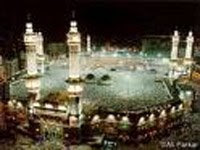
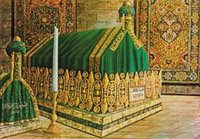
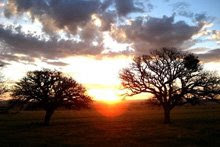
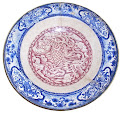

















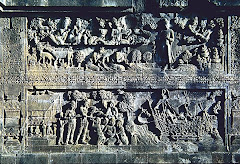

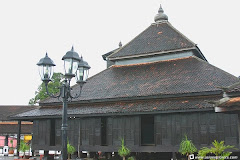

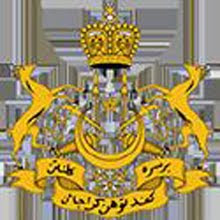

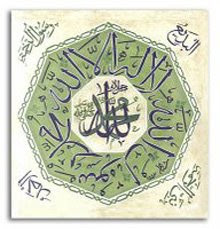
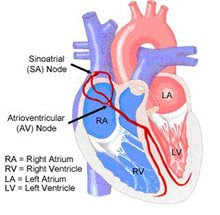
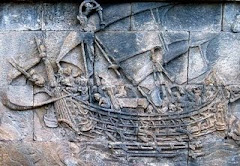

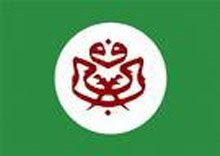
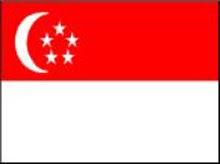
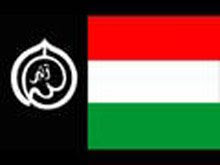





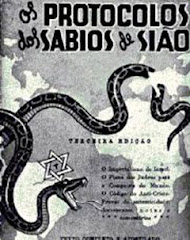

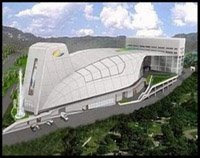

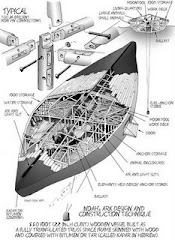
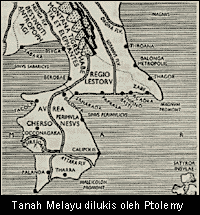




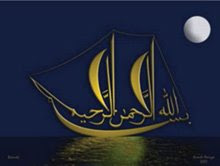



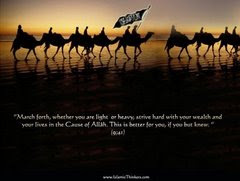










2 comments:
terima kasih sdr sangtawal utk info2 yg diberi...best sgt baca...
Buat pecinta togel yang ingin mendapatkan angka jitu silahkan klik http://kingtogel2d.blogspot.com atau Hub:-085319654747
Post a Comment